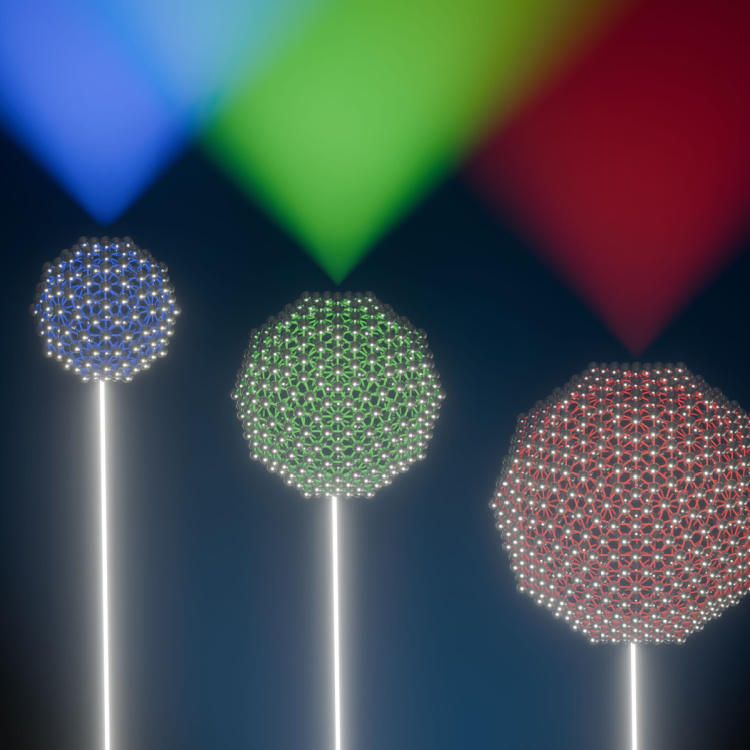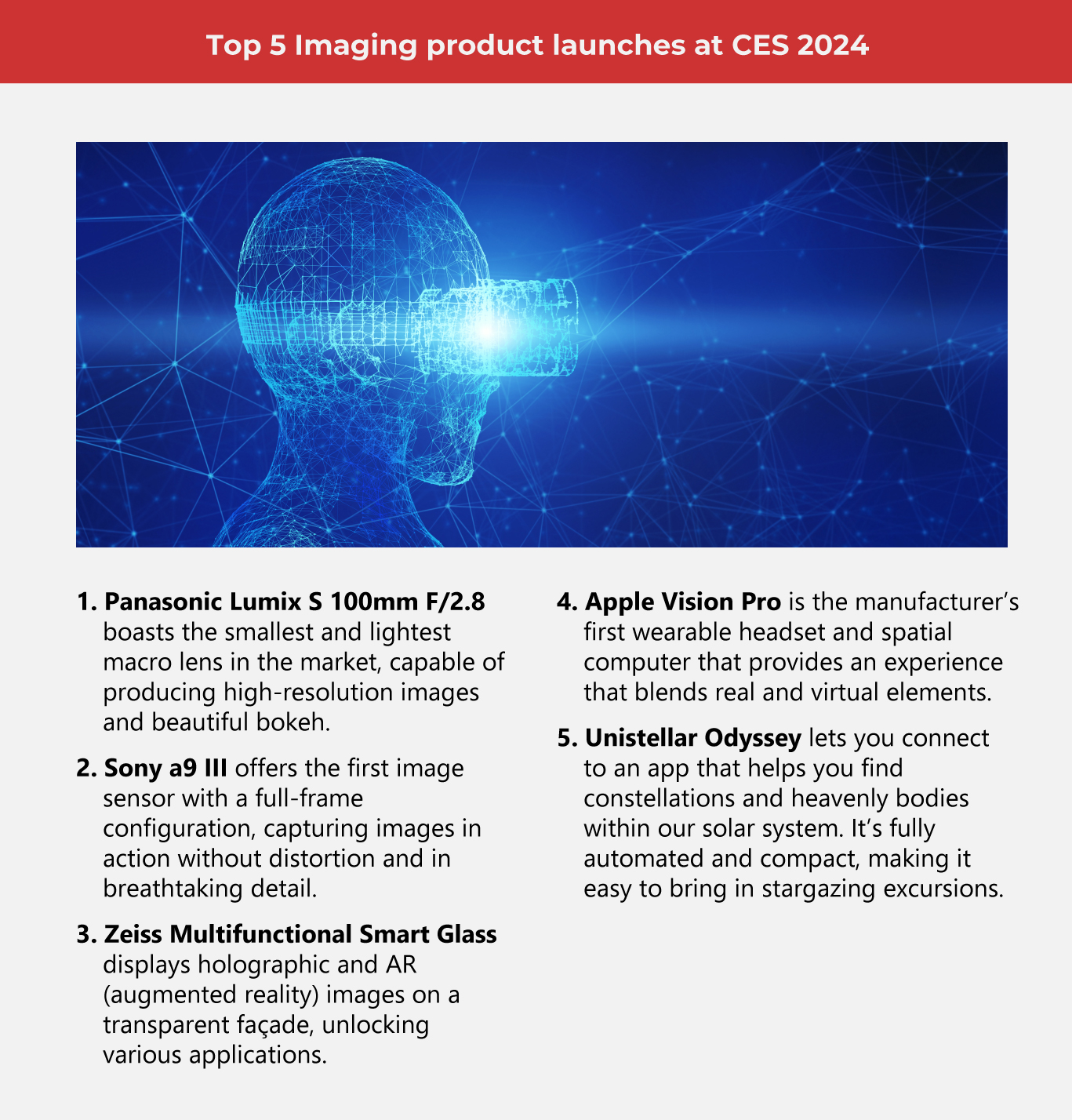A Clear Vision for Quantum Dots

Quantum dots are artificially manufactured nano-sized crystals that can convey electrons and produce light in different colors. These qualities make them ideal for various applications like displays, bioimaging, solar cells and many more.
At the recent CES (consumer electronics show) in Las Vegas, visual tech powerhouses such as Nikon, Sony, and Panasonic stole the show with imaging innovations. Though the event, managed by the Consumer Technology Association (CTA), is a platform for a wide range of technologies besides videography or photography, it also serves as a starting point for novel imaging breakthroughs.

With consumers wanting consistent high resolution, color accuracy, contrast and dynamic range for their display products, another tech advancement is strengthening its presence in the mainstream arena: quantum dots.
What are quantum dots?
Quantum dots are synthetic semiconductor nanoparticles that were first hypothesized in the 1970s and successfully created a decade later. These tiny crystals display behaviors aligning with quantum mechanics principles. For instance, they can convey electrons and produce light of different hues upon UV exposure. Because energy is based on wavelength, which results in color, one can adjust the size of quantum dots according to particular wavelengths. While bigger dots release light in the red spectrum, smaller dots produce greenish light. Such capability boosts color manipulation and accuracy, giving birth to various applications, including medical imaging, solar cells, and displays.
While this technology has many benefits, its main disadvantage is its content of toxic metals, such as mercury and lead. Because of their harmful elements, quantum dots are pricey and difficult to acquire due to heavy regulations on their use in personal electronics.
Still, the quantum dot market is growing, predicted to hit over US$8 billion by 2026, double its worth in 2021. This is because of its high demand for screen devices and other products like lasers and lighting.
According to Markets and Markets, major players in the global quantum market include the following:
- Samsung Electronics (South Korea)
- NNCrystals US Corporation (US)
- Nanosys (US)
- Nanoco Group (UK)
- QD Laser (Japan)
These companies have developed innovative products and strategic collaboration to boost their market status, helping them grow their global reach.
Quantum dots in consumer electronics
Today's display game involves devices that generate superior visuals that let viewers feel immersed in the world as they see it. As a result, manufacturers are leveraging nanotechnology that produces breathtakingly vivid and rich images. Everything from LED screens to commercial televisions exposes a broader color spectrum, and the required brightness to maximize high dynamic range (HDR) features thanks to quantum dots.
This technology was first used in premium TVs but has become integral in commercial purposes, such as digital displays and signage, wherein color precision and intensity are crucial.
How do quantum dots work? Manufacturers sandwich them into the layers of film, electronics and other components of an LCD (liquid crystal display). When light infiltrates the display stack, the layers containing quantum dots will intensify the LCD, displaying a broader and more vibrant color spectrum. Specific shades of blue, green, red and other colors are made possible in any light—dynamic hue levels that stand out and captivate viewers.
Quantum dots in the biomedical sector
While LED applications rule the quantum dots market, the healthcare industry is also exploring the technology's uses in live imaging, clinical diagnosis, drug absorption and many others.
During the COVID-19 pandemic, nanomedicines became the basis for the virus's vaccine development. Among nanomaterials, quantum dots cover the most surface, which is suitable for detecting cellular activities and viral diseases. Because quantum dots are adjustable, yield high quantum, have elevated brightness, and are able to generate blinking light, they can be applied in these biomedical measures:
-
Live cell imaging
Quantum dots show great potential in bioimaging, which means they can possibly replace traditional contrast dyes and isotopes that are radioactive in nature. These can also be employed in detecting lymph nodes typically seen in tumors like breast cancer.
-
Fluorescence-activated cell sorting (FACS)
FACS gets a boost from quantum dots, which can help assess cellular response to drugs, isolate certain cell groups, plot out immune cells, and distinguish disease models.
-
Photodynamic therapy (PDT)
Medical research has shown PDT as a prospective method to treat several cancers, such as skin, tongue, head, breast, and neck.
-
Drug delivery
Quantum dots' optical characteristics, which can be observed after administration, are ideal for tracing drug delivery. Additionally, these nanoparticles can easily bind with various drugs and have modifiable physio-chemical traits.
-
Biosensors
Quantum dots can be incorporated into biosensors used for diagnostic and toxicological applications. Beyond medicine, QD-fueled sensors are widely used in environmental settings, like detecting soil and water contamination.
A new development for quantum dots
Their use of toxic metals is quantum dots' main disadvantage. However, scientists have created a new variety of these non-toxic nanoparticles and are free of phosphine, a highly poisonous gas. Moreover, these toxin-free quantum dots demonstrate excellent performance in the short-wave infrared (SWIR) range.
SWIR is promising because it can infiltrate smoke, haze, and fog and identify particular elements unseen in visible light. This technology can significantly transform many fields, such as the automotive market, robotics, medical imaging and consumer electronics.
Quantum dots can make SWIR more accessible, enabling researchers to create a SWIR photodetector. With a spectral range of 350 nanometers to 1,600 nanometers, the fabricated photodiode performed just as well as similar devices that contained heavy metals.
With this development, the new quantum dots may be used for more affordable but high-performance applications. Examples include virtual reality and vision technology services for autonomous vehicles, making driving safer in inclement weather.
While quantum dots have room for improvement, their unique properties make them a beacon of innovation. As research and development efforts advance, we can expect more breakthroughs as we head toward a future as bright as the particles themselves.
As one of the Top 20 EMS companies in the world, IMI has over 40 years of experience in providing electronics manufacturing and technology solutions.
We are ready to support your business on a global scale.
Our proven technical expertise, worldwide reach, and vast experience in high-growth and emerging markets make us the ideal global manufacturing solutions partner.
Let's work together to build our future today.
Other Blog



